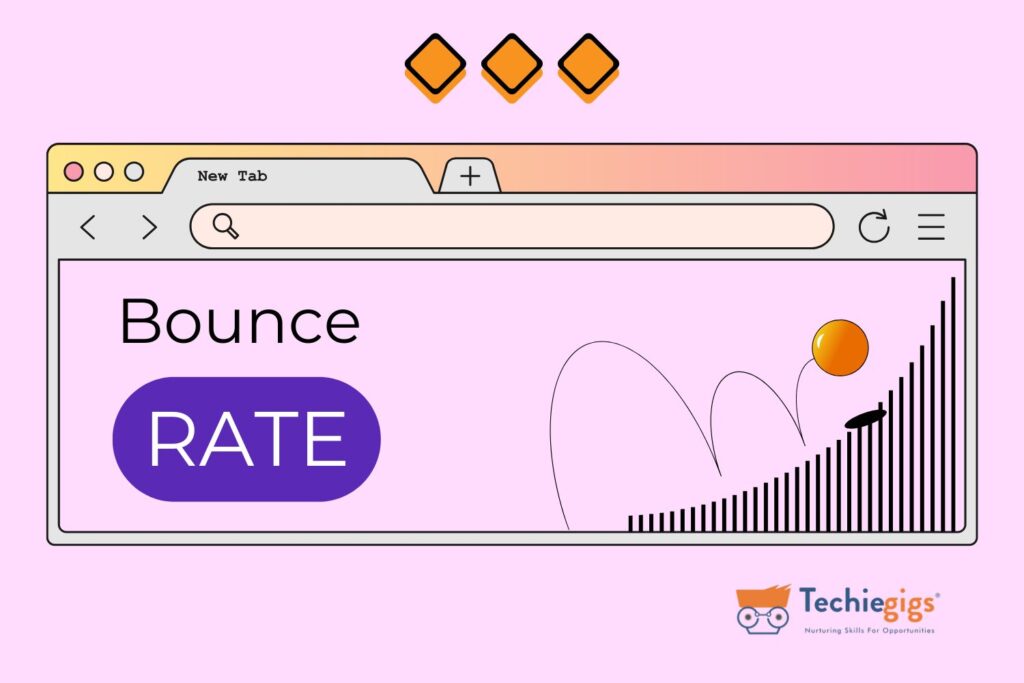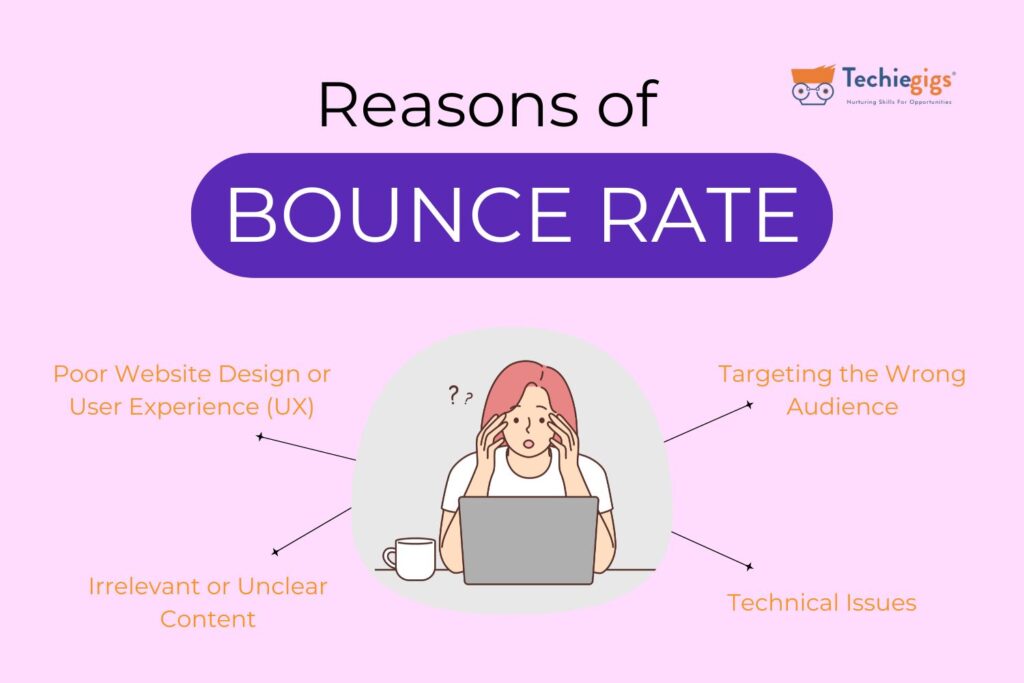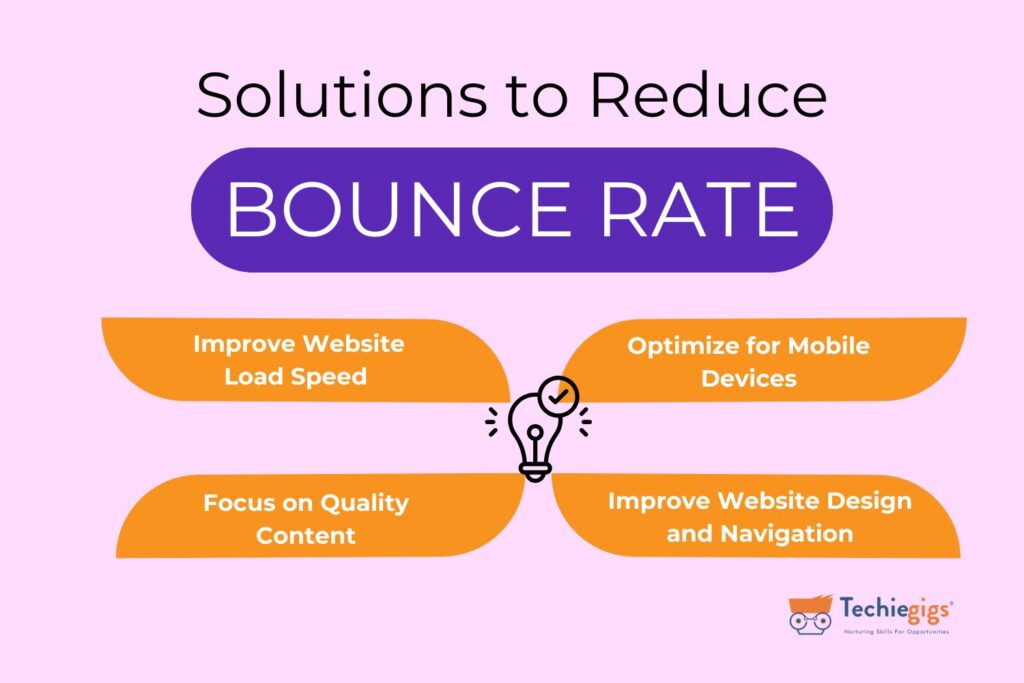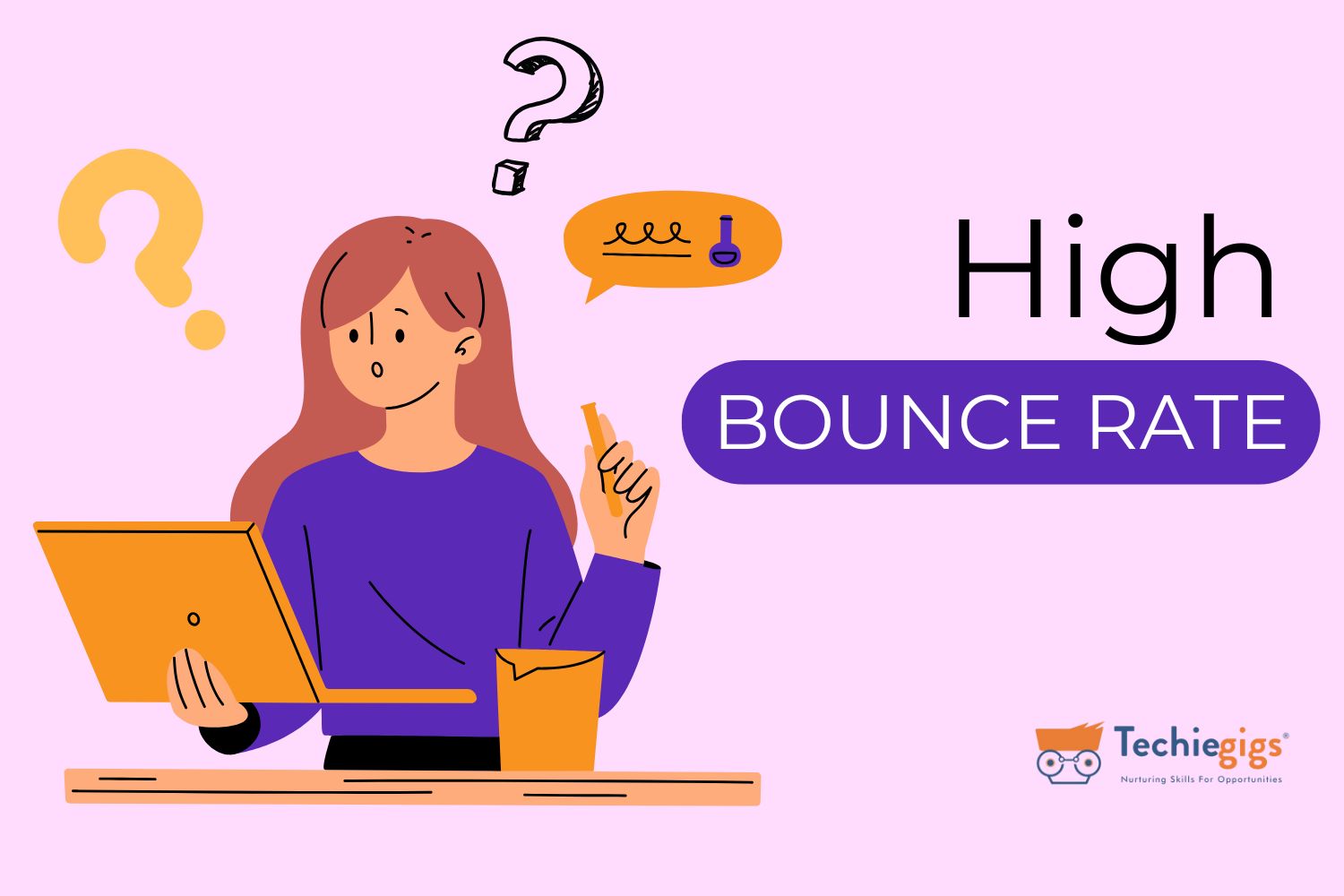Top 6 Reasons for High Bounce Rate On Websites
As a website owner, marketer, or business strategist, understanding how visitors interact with your website is key to optimizing user experience and increasing conversions. One of the most important metrics that helps gauge this interaction is bounce rate. But what exactly is bounce rate, why does it matter, and how can you reduce it?

In this blog, we’ll learn about bounce rate, explore the reasons for high bounce rates, provide actionable solutions to reduce it, and show you how to effectively monitor bounce rate using Google Analytics.
What is Bounce Rate?
In the simplest terms, bounce rate refers to the percentage of visitors who land on your website and leave without navigating to any other pages. Essentially, they “bounce” away after viewing just one page.
While a high bounce rate can indicate a problem, it doesn’t always signal failure. The key lies in understanding the context and nuances of this metric.
Table of Content
How is Bounce Rate Calculated?
Bounce rate is calculated as follows:
For example, if your website had 1,000 visits and 400 of them resulted in single-page visits, your bounce rate would be:
A low bounce rate (typically below 40%) suggests that users are engaging with your content and exploring other pages, which is a good sign. However, a high bounce rate (typically above 70%) can indicate a problem with your site’s content, layout, user experience, or relevancy to the user’s needs.
Types of Bounce Rate:
- Page-Level Bounce Rate: Measures the bounce rate of individual pages.
- Site-Level Bounce Rate: Measures the bounce rate for the entire website.
- Landing Page Bounce Rate: Refers to the bounce rate of the first page a visitor lands on, often the most important in an acquisition campaign.
Reasons for High Bounce Rate

A high bounce rate can be frustrating, but before jumping to conclusions, it’s important to identify the underlying causes. Here are the most common reasons for high bounce rates:
a. Poor Website Design or User Experience (UX)
Website design plays a critical role in user engagement. A poorly designed website that is difficult to navigate or visually unappealing will cause visitors to leave quickly. Common design issues contributing to a high bounce rate include:
- Cluttered or confusing layout: Too much information on a page can overwhelm users.
- Slow loading times: Visitors may leave if your website takes too long to load.
- Non-mobile-friendly design: In today’s mobile-first world, websites that aren’t optimized for mobile devices will have high bounce rates.
- Unclear navigation: Users should easily find what they’re looking for within a few clicks.
b. Irrelevant or Unclear Content
If your content doesn’t meet the expectations of your visitors, they’ll quickly leave your site. This could happen due to:
- Misleading headlines or meta descriptions: If the content doesn’t deliver on the promise of the headline or meta description, users will leave.
- Lack of engaging content: Visitors want valuable, useful content. If the content is not engaging, relevant, or fresh, your bounce rate will increase.
- Overwhelming ads or pop-ups: Excessive ads can distract users and encourage them to exit the page.
c. Targeting the Wrong Audience
Sometimes, a high bounce rate occurs because you’re attracting visitors who aren’t interested in what your website offers. Possible reasons include:
- Inaccurate targeting in paid ads: Poorly targeted ads can drive irrelevant traffic to your site.
- SEO misalignment: Ranking for keywords that don’t align with your target audience’s needs can cause irrelevant traffic to land on your page.
d. Technical Issues
Technical problems can prevent visitors from interacting with your website properly, which leads to them bouncing. These issues could be:
- Broken links: Clicking on a link that leads to a 404 error page can cause visitors to leave.
- Inconsistent design elements: If parts of your website are broken (images not loading, elements overlapping), it can frustrate visitors.
- Malfunctioning interactive elements: Forms, buttons, or other interactive elements that don’t function as expected can drive users away.
e. Poor Page Load Speed
A slow website can lead to a high bounce rate because users expect fast-loading pages. According to Google, the likelihood of a visitor bouncing increases by 32% if your page load time increases from 1 to 3 seconds.
f. Lack of Clear Call to Action (CTA)
If users don’t know what to do next after landing on your page, they may leave. A clear and compelling CTA helps guide users and encourages further interaction with your site.
Solutions to Reduce Bounce Rate

Reducing bounce rate requires identifying the root causes and implementing effective solutions. Here are some strategies to lower your bounce rate and improve user engagement:
a. Improve Website Load Speed
The faster your website loads, the better the user experience. Google recommends a page load time of under 3 seconds. To achieve this:
- Optimize images and videos by compressing them without losing quality.
- Minimize the use of heavy scripts that slow down your page.
- Use a Content Delivery Network (CDN) to speed up content delivery globally.
- Enable browser caching to make your website load faster for returning visitors.
b. Optimize for Mobile Devices
Since the majority of web traffic comes from mobile devices, ensure your website is mobile-friendly. Implement responsive web design, so your website adapts to different screen sizes and resolutions. This includes optimizing images and buttons, and testing for easy navigation on mobile devices.
c. Focus on Quality Content
Creating high-quality, engaging, and relevant content is essential for keeping visitors on your site. Here’s how to enhance content:
- Write compelling headlines and meta descriptions that clearly convey the value of the content.
- Offer solutions to common problems your target audience faces.
- Use multimedia (images, videos, infographics) to make your content more engaging.
- Break up text with headers, bullet points, and short paragraphs for better readability.
d. Improve Website Design and Navigation
A clean, simple, and user-friendly website design can encourage users to explore more pages. Ensure that:
- Your site is easy to navigate, with clear menus and a logical structure.
- You have a visible and intuitive search function.
- Your design is visually appealing but not overly cluttered.
e. Implement Internal Linking and Clear CTAs
Using internal links can guide users to other relevant pages on your site, keeping them engaged. Additionally, having clear and compelling calls to action (CTAs) will encourage visitors to take further steps, whether it’s making a purchase, subscribing to a newsletter, or reading more content.
f. Target the Right Audience
To ensure that you’re attracting the right visitors, refine your SEO and paid advertising strategies:
- Use keyword research tools to target relevant and high-intent keywords.
- Make sure your ads accurately reflect your offerings to prevent irrelevant traffic.
- Understand the interests and needs of your target audience to create content that resonates with them.
g. Reduce Pop-ups and Ads
Excessive pop-ups and intrusive ads can frustrate visitors and lead to higher bounce rates. Limit pop-ups, or implement exit-intent pop-ups that appear only when users are about to leave the page.
Bounce Rate and Google Analytics

Google Analytics is a powerful tool for monitoring bounce rate and understanding user behavior on your website. Here’s how you can use it to track and improve bounce rate:
a. How to View Bounce Rate in Google Analytics
1. Log in to Google Analytics and go to the “Behavior” section.
2. Under “Site Content”, click on “All Pages” to view the bounce rate for individual pages.
3. You can also view the “Acquisition” section to see bounce rates for different traffic sources (organic, paid, social, etc.).
b. Segment Your Audience
Google Analytics allows you to segment your audience by factors like location, device, and source of traffic. By doing this, you can identify which segments have the highest bounce rates and focus on improving those areas specifically.
c. Set Up Custom Alerts
You can set up custom alerts in Google Analytics to notify you when your bounce rate spikes beyond a certain threshold. This can help you quickly identify and address issues with your website.
d. Compare Bounce Rates Over Time
Google Analytics provides the ability to compare bounce rates over different time periods. This can help you assess whether the changes you made to your site (content updates, design improvements, etc.) have led to a reduction in bounce rate.
Conclusion
Bounce rate is a crucial metric that offers valuable insights into how visitors engage with your website. While it’s a general indicator of user experience, understanding its nuances and addressing the factors that contribute to high bounce rates can significantly improve your site’s performance.
By enhancing your website design, targeting the right audience, improving content quality, and using tools like Google Analytics, you can reduce bounce rate and increase engagement on your site. Remember, the goal isn’t always to eliminate bounce rate entirely, but to ensure that visitors who land on your pages find value and are encouraged to explore further.
Start applying these strategies today to enhance user experience and drive better results from your digital marketing efforts.

